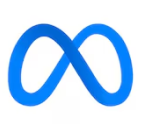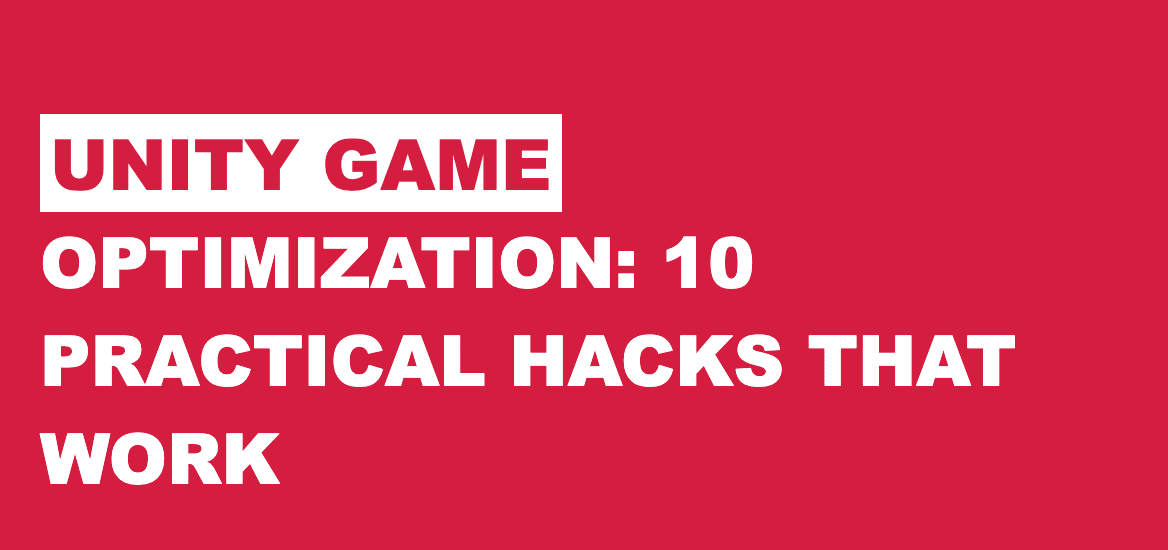Optimize Performance for Smooth AR VR Development: Tips and Techniques

Since its inception spatial computing has allowed us to experience the world of technology in completely different ways. They really changed the way we interact. A swift spike in AR VR development led every business to trust that these innovations were not mere hollow facades. The influence was not uncanny. But to maintain an upward momentum they also need to overcome certain challenges and hurdles.
One challenge that has a profound impact on the use of AR VR technology is performance. Performance optimization is a key ingredient in AR VR applications. The smoothness and realistic visualization ensure safety and convenient interactivity for users. So as you see providing the best user experience is directly connected to optimizing your apps for the best performance, period.
Importance of Improving the Performance in AR VR Development
At the core, AR VR empowers one to present information in a visually spectacular way. To understand the importance of elevating performance, we will consider a mobile app. Even those AR VR app developers work towards that goal too. It’s not an example but presuming helps you get the whole idea. Moving on, let’s list down what poor performance leads to or what areas it might affect.
- User experience: A smoother, responsive, and lag-free VR AR application will have the best user experience. And for achieving such fleets, improving performance is one way.
- Immersion: An app optimized for maintaining high performance has higher framerates. It makes the whole experience more immersive for users and gives it informative depth.
- Motion Sickness: Remember we talked about how good optimization leads to safety and convenience of interaction. Well opposite of that, poorly optimized apps cause jittery effects and glitches resulting in motion sickness.
- Battery life: Generally AR VR apps run on robust hardware, but that does not mean one should ignore device compatibility. Poorly optimized apps can drain the batteries of your devices.
Development costs: It is considered fruitful to take necessary steps to optimize performance while developing VR apps. Such simple consideration can eliminate the complexity and resource intensive work required to maintain the sustaining performance.
Key Components Affecting the Performance of Ar Vr Applications
Primary there are three key components to be explored and studied. They are hardware, software, and design. Every component affects the performance of apps in various ways. However, we are going to focus on two of them primarily. The software and design, help apps deliver a supreme experience, prevent motion sickness, and enhance user engagement.
1. Software:
- An AR VR app’s ability to deliver spectacular visuals depends on rendering engines and frameworks.
- Another crucial factor is the complexity of 3D assets. There is a direct correlation between 3D assets and performance, which we will discuss moving ahead.
- Lastly, the code which is the fundamental element of apps’ functions
Hence on the software side; engines, assets, and code has a profound impact on performance of AR VR apps. Leading AR VR development company focuses on synergizing these software components to produce the best results. They might discover challenges when it comes to using such high spec engines, frameworks, and coding practices. But that is what they’ve prepared themselves for in the ideation process beforehand.
2. Content Design:
- When your scene is too complex, it will affect the performance too. As the number of objects increases the complexity to render each and everyone perfectly also increases. This has an adverse effect on the performance of an AR VR app.
- Now that AR VR is being used to replicate real-life simulations one should understand physic and particle effects too. Not doing so deteriorates the visual intensity of content for engaging people.
Tips for Optimizing the Performance in Ar Vr Development
Before listing down tips, we would like to explain one of the important metrics of AR VR—draw cells. Draw cells are like tiny boxes when combined will give the shape of an object in the digital world. If it’s too confusing just think of them as LEGO building blocks. What’s more you need to only understand two major relations.
- The first one is using more draw cells to generate detailed 3D assets for you.
- However, using more draw cells will also affect your hardware performance too. As they are resource intensive and very complex but adds to the rendering time.
Just like drawing cells there is another building block too; Tri count. They too share two contradictory relations with two different factors.
- Using more tri counts will allow you to design and develop smoother interactions.
- However, their increase in number can also affect the performance of the app in terms of visualization.
The above two components mentioned are important for AR/VR developers. Obviously for those who focus on even the tiniest bits to gain a certain advantage. For perfectionists looking to keep improving their results. Nevertheless moving on!
Technical Tips
To offer reliable AR VR app development services performance is considered as a measurable metric. If their app illustrates poor performance they will lose their credibility. Eventually, a client’s head counts too. To avoid such mishaps they constantly make use of these technical tips.
Baking
- Definition: In Light baking, you pre-calculate the scene illumination before run time.
- Explanation: Imagine you have a house with different light sources. At different times of the day, the light will fall on the house from different angles. Rendering the scene for the house for every angle will take a lot of time. Instead of this you use a light source from every angle and shine the light of the house. And you take a picture of the house. Now whenever you want to show someone that particular angle of lighting you show that picture.
- Benefits: Light baking will reduce the power consumed during the rendering process. More specifically, it keeps the count of draw cells and tri counts well maintained. A spiked count is due to different angles, different light sources, and different scenes. But combining every angle and rendering it all together to present the specific scene later will increase the performance of the application.
Culling
- Definition: Occlusion culling is one more technique used to optimize the performance during the development of AR apps. It identifies the less relevant objects and excludes them from the rendering process.
- Explanation: Every AR VR application has a viewing cone. The cone’s top is slashed and it is commonly known as frustum. The objects outside this frustum zone are considered less important. Those objects can be eliminated from the rendering process.
- Benefits: It reduces the load of the GPU, hence increasing the processing image in real time. If the number of objects going through the rendering process decreases, the performance improves significantly.
Batching
- Definition: Batching processing is another rendering process that reduces the impact of draw cells on the CPU and GPU.
- Explanation: In AR VR experiences there are numerous game objects/assets that are static. The static game-objects that have similar shaders and low physics-based qualities are batched together. This batch is rendered in a single process, making it more efficient for developers.
Benefits: The low count of draw cells decreases the time taken to render the assets. It also consequently reduces the GPU load and overhead resulting from individual rendering passes.
Best Practices for Maintaining Performance
The above mentioned techniques might seem like a golden key to opening the door of efficiency and performance. Although techniques are promisingly effective there are certain practices that need to be kept in mind. These practices when used during or post AR VR development process will indirectly affect the performance metrics.
Platform-specific Development
At the end of the day, we are developing AR VR apps for users. Their preference in terms of platform affects the routes of development phase you take While indicating one needs to take note of limitations and capabilities of platform users prefer.
The metrics include frame rates, response time, field of view, resolution, tracking accuracy. Considering all these metrics, AR VR developers can work on the immersive and performance factors of the applications.
However, the development becomes a tad bit complex for developers when it comes to a wide-reaching audience base. The wide-reaching audience generally prefers multiple platforms. Complexity may affect the performance. But if you know the trends in cross-platform mobile apps it might help to touch base faster.
Precise Tracking
Tracking is one of the most important metrics that serves both developers and users too. Let’s talk about its effectiveness. The precision and accuracy of the whole process, of course. Tracking refers to calculating the position, orientation, movements, space, and physical measurements of the users.
AR VR developers often use tracking solutions to collect all the required information about real space. This real space is then replicated in digital space with the same solution. The solutions include computer vision techniques, capturing through sensors, interior measurement, etc. These technologies are fairly advanced and utilize a hefty amount of GPU as well as hardware load.
By combining efficient hardware and software one can achieve a reliable tracking solution for their application. Post AR VR development, tracking resolves performance issues by eliminating jitters, drifting, object locomotion in digital space.
Testing and Iterating
Whether it’s an app, solution, or device specific game, testing and iterating have a significant impact. Optimizing an AR/VR app’s performance is not limited to the development phase. It goes beyond the development cycle to maintain the performance of an app.
Such practices of improving the performance of apps near or after the launch are a bit of a gamble. However, the reward is highly beneficial. There are times it will reveal opportunities to improve the performance through innovative ideas. Testing the app rigorously allows developers to be resilient, and optimize graphics, visuals, interactions, etc to balance the performance in every way.
Read also: The Future of Entertainment: AR VR Experiences for Theme Parks
Shape the Future with AR/VR!

Conclusion
Enhancing the performance of an app is like a rabbit hole. You will keep finding metrics, techniques, practices, that are viable contributors. However, exceeding the limits is not something users appreciate. This is due to the fact that it will affect the battery life and device compatibility too.
Balancing the performance. Now that’s where you must focus. Every VR AR development company also aims to incorporate methodologies and techniques to balance the performance. User experience, device compatibility, development efficiency, cost of operation, it must cover every corner. Remember an app providing the best AR VR experience embraces the safety and convenience of users too.

















